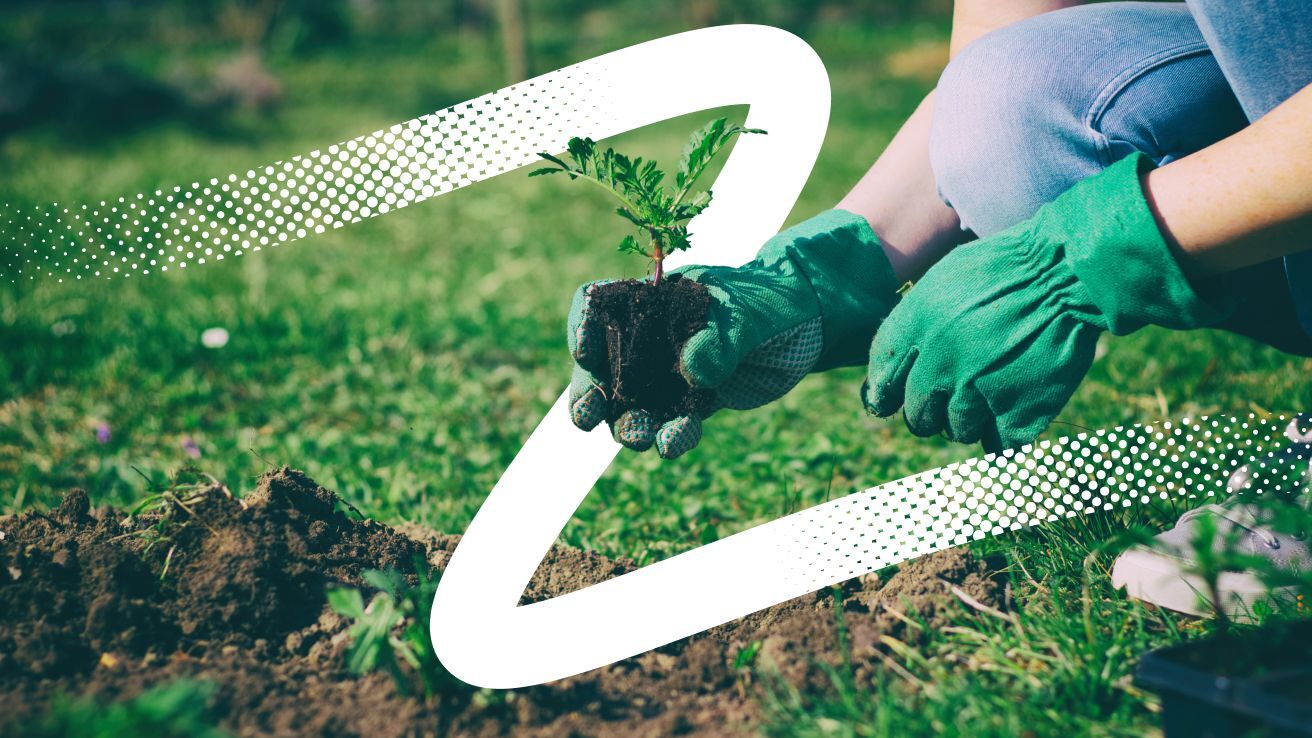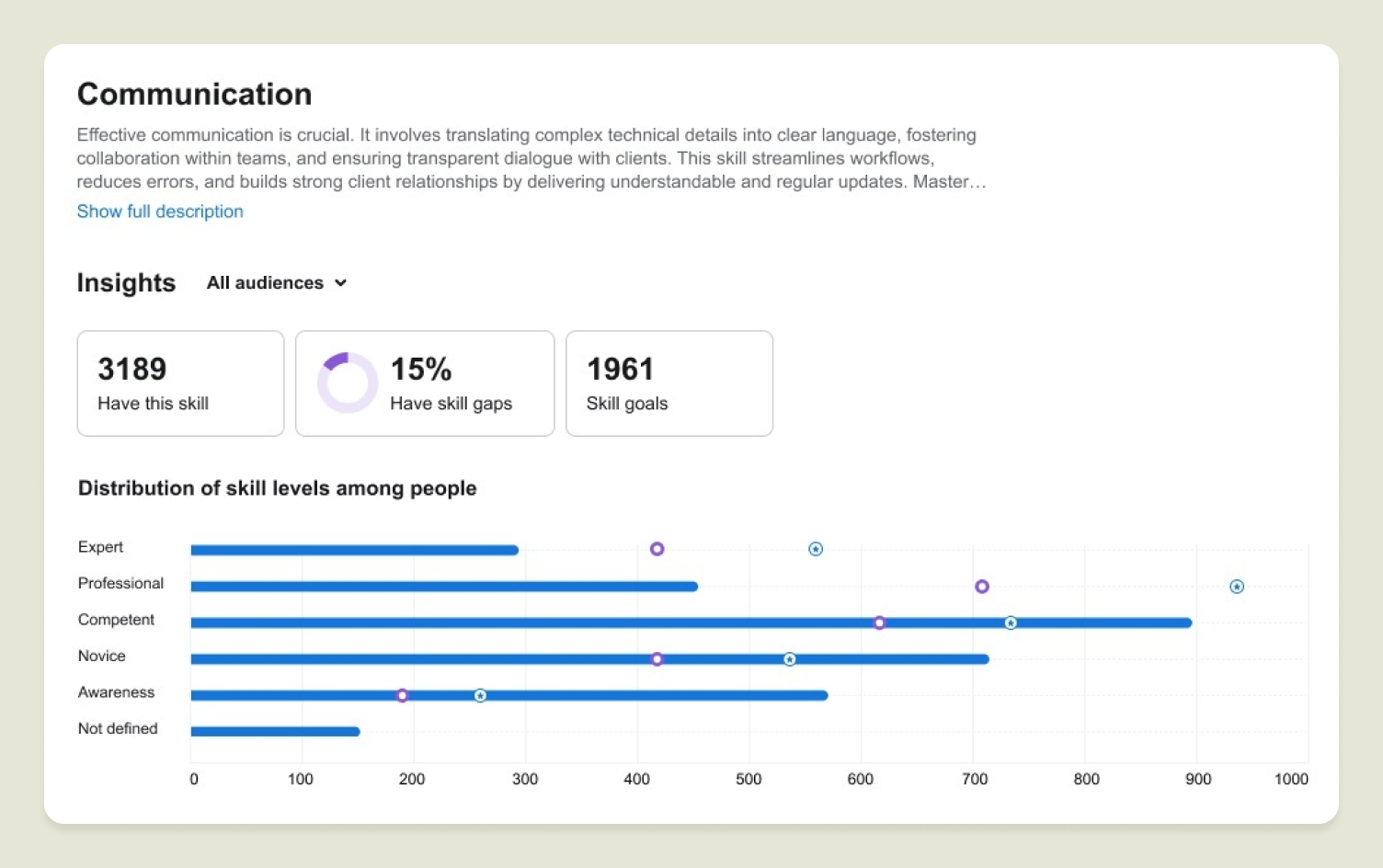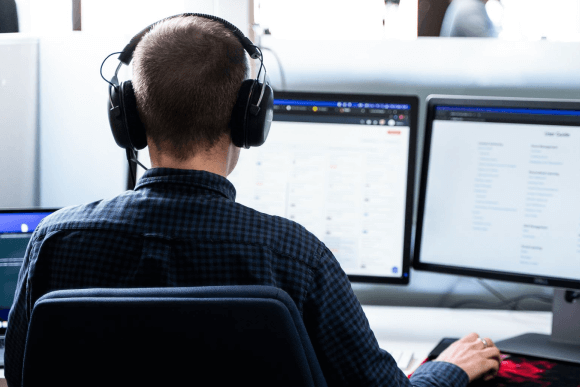Cultivating skills in the digital garden: Secrets of high-performing L&D teams
In this article, learn how to develop a thriving learning environment for employee skill development.

Those that know me, know that I love a good gardening analogy for L&D, it resonates so powerfully with our goals of creating the space for others to achieve their potential. In my experience, when it comes to cultivating skills, high-performing L&D teams have discovered the art of digital gardening. They’re not just delivering training; they’re cultivating a thriving ecosystem of skills, carefully tending to the growth of talent with the precision of master gardeners.
So it was a joy to join Mika Kuikka, President at Valamis, in a webinar this May to reflect on 20 years of research into how these high-performing teams have developed their gardening prowess. Together with the participants on the call, we uncovered a few of their secrets:
Preparing the soil: Understanding your learning environment
Just as master gardeners meticulously analyze their soil before planting, top L&D teams start by deeply understanding their organization’s learning environment. They ask:
- What’s the current ‘soil composition’ – what skills are needed in each of our specific contexts?
- What ‘nutrients’ (resources, support, culture) are present or lacking?
- What ‘climate’ (business environment, challenges) are we operating in?
As one of our audience members wisely noted during our live webinar, “tying what we are doing back to the core of the business, the tactical objectives of the business, is key.” This alignment is like ensuring your soil pH is perfect for the crops you want to grow.
Technology serves as a sophisticated soil testing kit in this process. Mika shared how the Valamis platform consolidates and identifies areas for skill development with clear data, providing a comprehensive view of the current ‘soil conditions’. This digital insight allows L&D teams to make informed decisions about where and how to plant their skill seeds.

Valamis skills management analytics dashboard example
Planting and nurturing: Cultivating skills with precision
With the groundwork prepared, it’s time to plant and nurture skills. High-performing teams approach this phase with the care of a gardener tending to rare orchids.
Stella Collins, co-founder and Chief Learning Officer at Stellar Labs, has leaned into the science of how we learn and we discussed her GEAR model (Guide, Experiment, Apply, Retain) as a framework for the nurturing process that takes people from knowing to doing:
- Guide: Provide the right ‘nutrients’ through carefully curated , relevant learning inputs
- Experiment: Create ‘greenhouse’ conditions for safe skill practice
- Apply: ‘Transplant’ skills into the ‘main garden’ of daily work
- Retain: Implement ‘irrigation systems’ of reinforcement and feedback
Mika again demonstrated how the Valamis Skills Management features evaluate skill levels to help L&D teams pinpoint gaps so they can create personalized upskilling and reskilling learning paths – much like a sophisticated drip irrigation system ensuring each ‘plant’ gets exactly what it needs to thrive.

How to conduct a skills gap analysis and what to do next
Start building your foundation for strategic workforce development.
Download guideTending the garden: Continuous care and improvement
A garden is never finished; it requires ongoing care and adaptation. High-performing L&D teams embody this principle in their approach to skill development.
Key questions they continually ask:
- How are our ‘plants’ (skills) growing? Are any struggling or thriving unexpectedly?
- What ‘pests’ or ‘weeds’ (challenges, outdated practices) are affecting our garden?
- How can we improve our ‘gardening techniques’ (L&D practices) based on what we’re observing?
Technology acts as a sophisticated garden monitoring system, providing real-time data on skill growth and utilization. But remember this caution shared by an audience member during our live webinar: “Technology often allows us to do what we’ve always used to be doing.” The key is to use these digital tools not just to monitor, but to innovate in our gardening practices.
For me, some of the key takeaways from the vibrant discussion on the day are:
- Analyze your environment: Understand the unique ‘soil conditions’ of your organization before implementing skill development initiatives.
- Nurture with precision: Use targeted learning experiences to cultivate specific skills, adapting your approach based on individual and organizational needs.
- Tend continuously: Implement systems for ongoing monitoring and improvement of your skill garden.
- Leverage digital tools wisely: Use technology to enhance your ‘gardening’ capabilities, not just to automate existing processes.
As L&D professionals, we have the opportunity to transform from training delivery specialists into master gardeners of organizational talent. We’re not just imparting knowledge; we’re cultivating a thriving ecosystem of skills that can adapt and grow with the changing seasons of business needs.
I have always believed that it takes a village to build a skill. In our digital gardens, we’re not just growing individual plants, but nurturing entire landscapes of interconnected talents and capabilities.
So, I challenge you: What’s one area of your ‘skill garden’ that needs attention this week? How might you use your L&D toolkit to create more fertile conditions for growth?
The digital age has given us powerful new tools for cultivation, but the art of gardening remains a deeply human endeavor. Let’s embrace our role as digital gardeners, creating lush landscapes of talent that will help our organizations thrive in any climate. It’s time to get our hands dirty in the soil of skill development and watch our gardens grow!
Keep learning with Laura! For more L&D insights, follow Laura on LinkedIn and check in with her current research at Learningchangemakers.com.
About the author
Laura Overton is an award winning learning analyst dedicated to uncovering and sharing effective practices in learning innovation that lead to business value. The author of over 40 reports and hundreds of articles, her work is based on 30 years of practical experience and a commitment to supporting evidence based learning decisions. As the founder and original CEO of Towards Maturity, she is also known for leading a 15 year longitudinal study programme (2004 – 2019) with thousands of Learning leaders and workers around the globe to uncover and share learning strategies that lead to business success.




